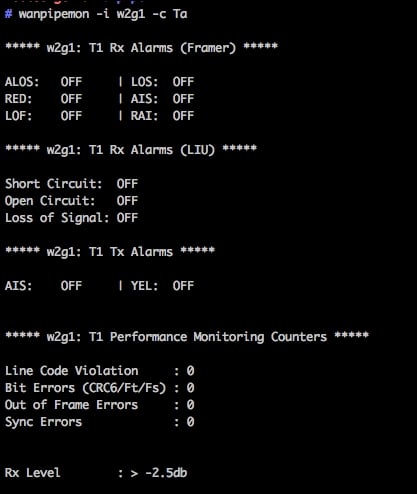Things always go wrong. With so many moving parts and different complex protocols and configurations it's expected mistakes will be made at some point. You may provide invalid configuration, the software may have a bug, the remote equipment may be misbehaving, and so on. You need to be prepared to deal with all those problems. Debugging a problem is often a matter of working your way up, verifying that each hardware or software layer is working as expected, until you find the layer that is not doing its job. The first layer to check is the physical layer. For T1/E1 lines, verify there are no alarms and the port is in the Connected status (for Sangoma cards) or OK for DAHDI (use the DAHDI tool application).

Mastering FreeSWITCH
By :
Mastering FreeSWITCH
By:
Overview of this book
FreeSWITCH is one of the best tools around if you’re looking for a modern method of managing communication protocols through a range of different media. From real-time browser communication with the WebRTC API to implementing VoIP (voice over internet protocol), with FreeSWITCH you’re in full control of your projects. This book shows you how to unlock its full potential – more than just a tutorial, it’s packed with plenty of tips and tricks to make it work for you.
Written by members of the team who actually helped build FreeSWITCH, it will guide you through some of the newest features of version 1.6 including video transcoding and conferencing. Find out how FreeSWITCH interacts with other tools and APIs, learn how to tackle common (and not so common) challenges ranging from high availability to IVR development and programming advanced PBXs.
Great communication functionality begins with FreeSWITCH – find out how and get your project up and running today.
Table of Contents (21 chapters)
Mastering FreeSWITCH
Credits
About the Authors
About the Reviewers
Contributors
www.PacktPub.com
Preface
 Free Chapter
Free Chapter
Typical Voice Uses for FreeSWITCH
Deploying FreeSWITCH
ITSP and Voice Codecs Optimization
VoIP Security
Audio File and Streaming Formats, Music on Hold, Recording Calls
PSTN and TDM
WebRTC and Mod_Verto
Audio and Video Conferencing
Faxing and T38
Advanced IVR with Lua
Write Your FreeSWITCH Module in C
Tracing and Debugging VoIP
Homer, Monitoring and Troubleshooting Your Communication Platform
Index
Customer Reviews


